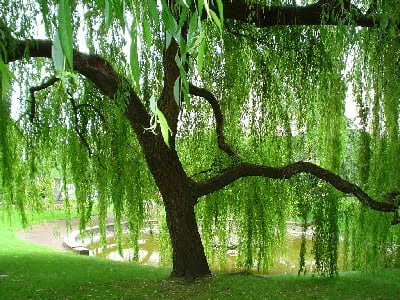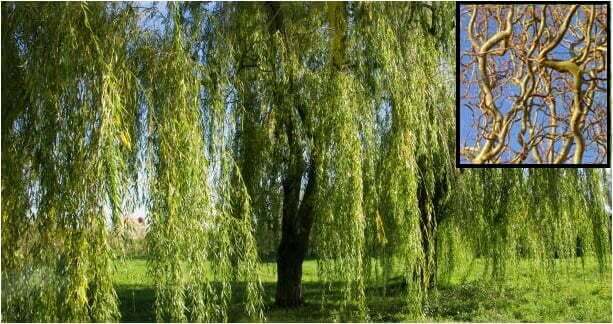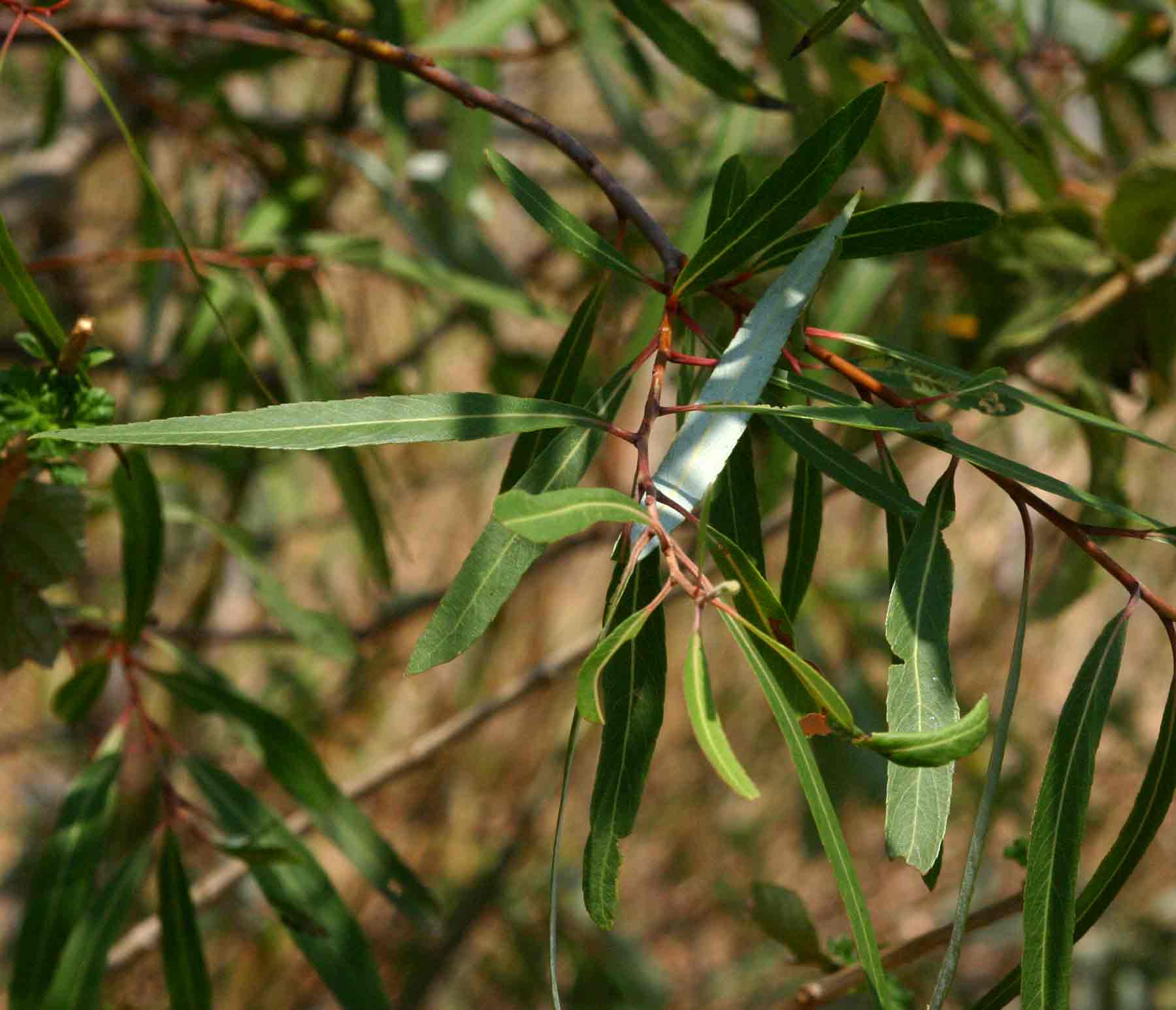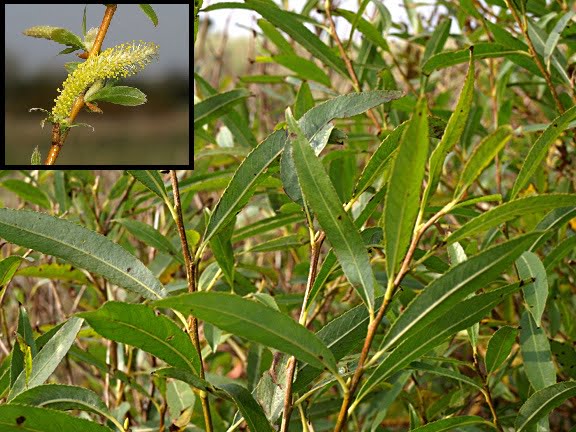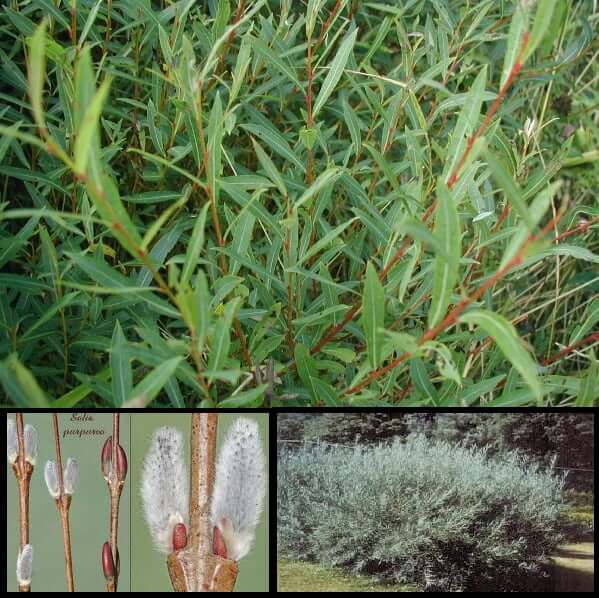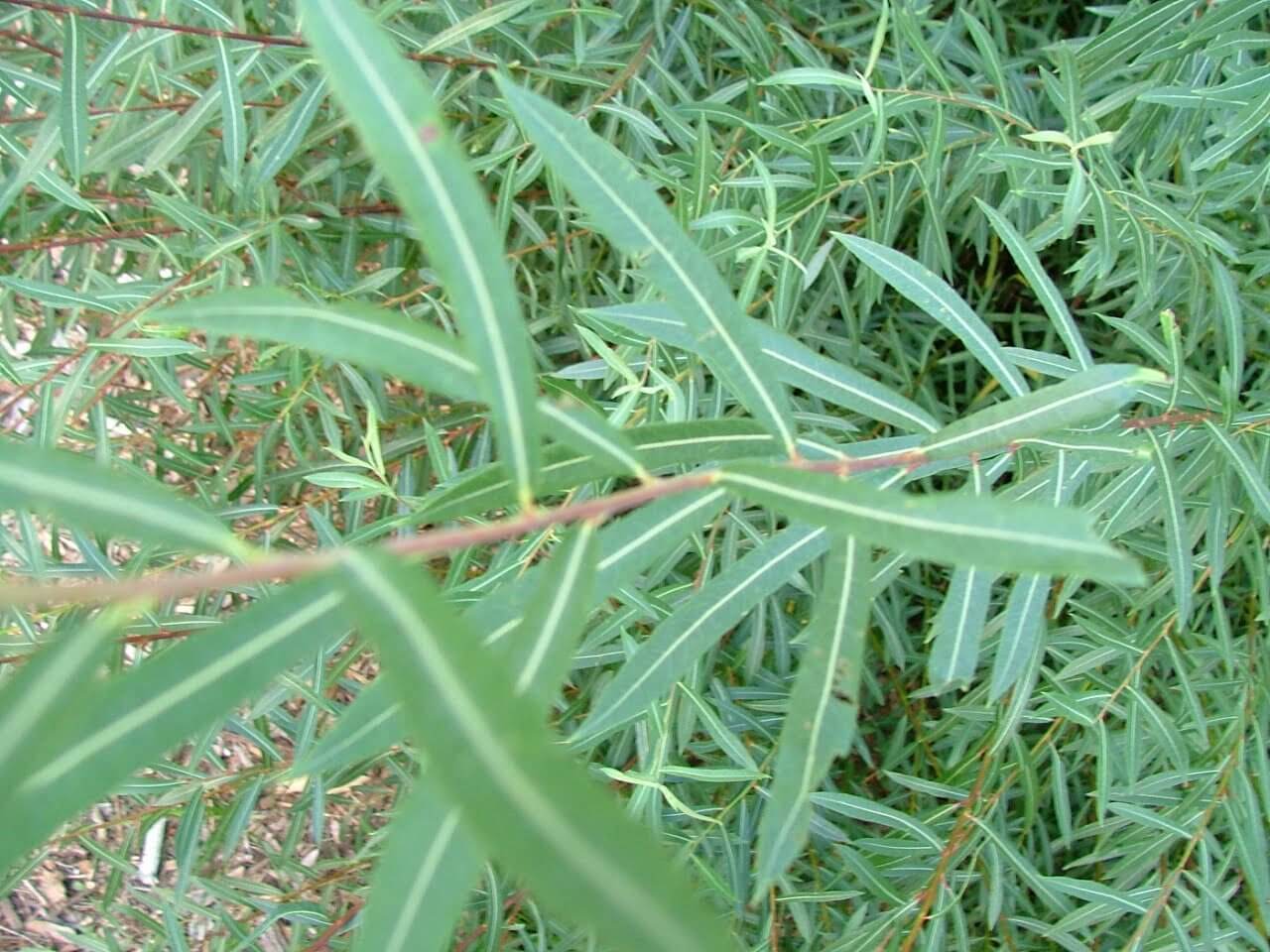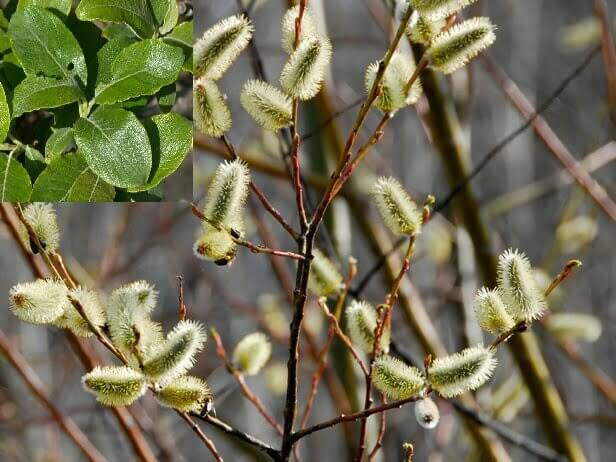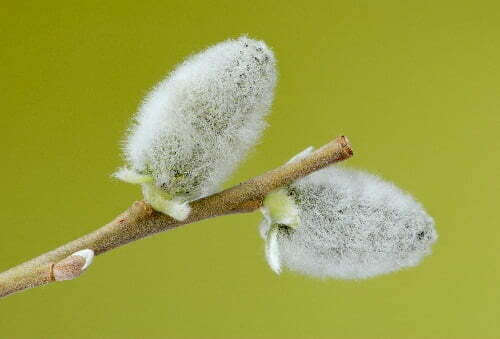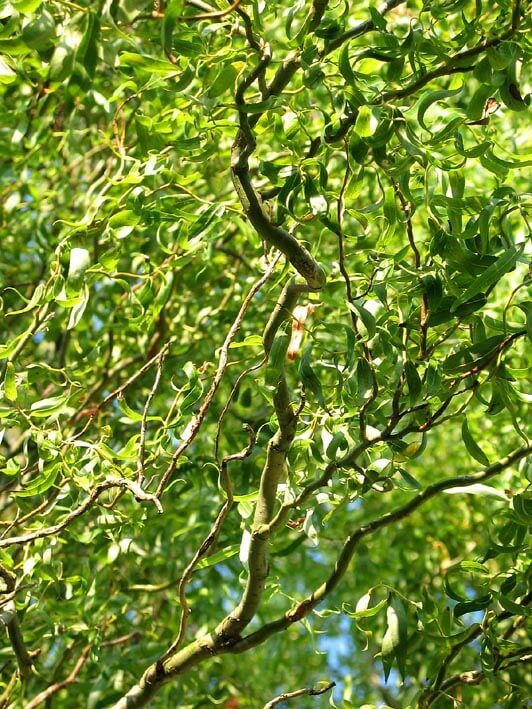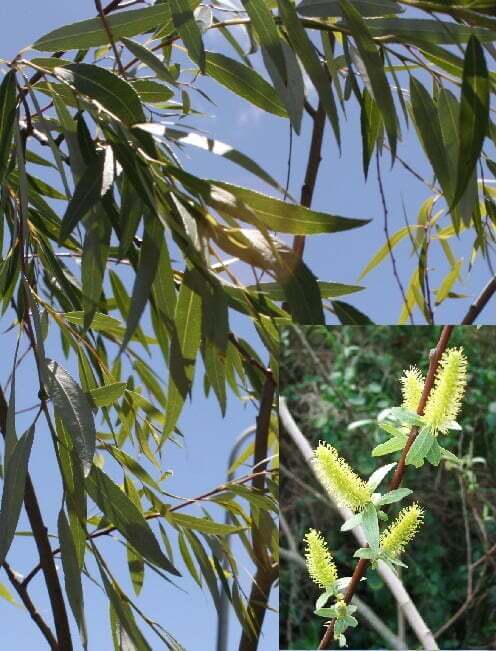Salix rubens 'Basfordiana' (The Basford Willow)
The Basford Willow is a medium sized fully hardy deciduous tree/shrub from France. It grows well in semi-shade and direct sun, and prefers medium levels of water. It has a high flood tolerance. It is grown for the brilliant golden yellow to orange colour of its stems which is best seen in winter. It can be hard pruned and the twigs used for basket making. This is a rounded tree or shrub. It has a fast rate of growth and has a multiple stem growth form, and has an ultimate height of 4- 5m and spread of 3m. It can take 6-10 years to reach its ultimate height. The leaves are green in summer and green and yellow in autumn. They are lanceolate in shape. It is best used as borders, on the waterside and wetland or bog areas.
Salix purpurea “Purple Haze”
Purple Haze is a deciduous, large shrub or small tree (3-4m) with a rounded, dense shape composed of thin branches and has a fine texture. It boasts a fast growth rate and will easily flutter and ripple in the breezes as the stems sway in unison. It is native to Europe, northern Africa and to central Asia and Japan. Foliage is simple, and oblanceolate. The leaf tips are serrate and coloured dark blue-green with silvery-blue undersides in summer. In autumn, leaves turn purplish black. It has attractive male flowers. The bark has a purplish stem colour on upper side of stem, green stem colour on underside of stem. The buds are small and purplish with very thin stems that turn a light gray when mature. It is fast growing, easily transplanted form containers, prefers moist soil, or to grow along water sources. Full sun or partial shade suits it and it is very adaptable to poor soils, soils of various pH, dry soils, and drought. Landscapers can use it for wet sites, colour and fine texture and to stabilize stream banks. When this shrub gets too large for its allocated space or simply looks untidy, it can subjected to rejuvenation pruning a short distance above the ground, preferably anytime from late Winter to mid-Summer. The new shoots and suckers will quickly sprout and soon overwhelm the stumps in a mass of vigorous stems and foliage. It can also be used as specimens, group planting, or mass plantings and highly complementary to ornamental grasses, as an informal hedge, as a deciduous screen, on embankments for erosion control (in dry or wet soils), or as a solitary shrub whose fine texture and bicolour effect in the breeze. It is sought after for its harvested young stems to be used in basket weaving.
Salix caprea ‘Pussy Willow’ / ‘Goats Willow’
Salix caprea is a deciduous tree growing from 2m- 8m (max), at a fast rate. It is hardy and is not frost tender. The plant prefers light (sandy), medium (loamy) and heavy (clay) soils and can grow in heavy clay soil. It can grow in semi-shade (light woodland) or full sun. The plant can tolerate maritime exposure. It can even tolerate atmospheric pollution! It is first flowering in spring and the stems are ideal for flower arranging then. The stems are very flexible and can be used in basket making. The plant is usually coppiced annually when grown for basket making, though it is possible to coppice it every two years if thick poles are required as uprights. The bark is tough and flexible. It is used as a substitute for leather. The plant is fast growing and tolerant of maritime exposure, it can be used as a windbreak hedge and shelterbelt. Wood is soft, elastic and easily split. Used for baskets, rugs etc. A good quality charcoal is made from the wood too!
Salix matsudana ‘Tortuosa’ (Corkscrew Willow)
Salix ‘Tortuosa’ is a compact, deciduous, flowering, rounded tree with an architectural form. It is a small tree (4 to 6m height) with yellow flowers (winter) and medium green foliage. It is also frost hardy and fast growing. This shrubby willow flourishes on moist / wet soils of any type in part / full sun. It will require pruning to produce distinctive twisted growth. Note that it should be planted well away from any house. Attractive autumn colour. Ornamental winter bark. All round tough plant suitable for problem areas. Architectural plant – ideal as a ‘stand out’ plant. Attractive form or foliage for all year interest. Tolerates full sun and sandy, drought-prone soils. Tolerates cold exposed locations. Tolerates heavy clay soils. It produces winter flowers.  Salix mucronata ‘Cape Willow’, ‘Kaapse Wilger’
This graceful semi-deciduous to evergreen tree grows up to 15m with an open crown and slightly drooping branches. Older trees have fissured, brown bark, while younger trees have smooth, green-red bark. The leaves are simple, alternate and taper to both ends. They are glossy, dark green above and light green below. Flowers appear in short spikes with males and females on separate trees. The male spikes are dense, yellowish and can be up to 50mm in length. The greenish coloured female spikes are shorter and thicker. The Cape willow may be found growing along streams and riverbanks in much of the south east, south, and south west Cape, specifically along the Kei and Bashee Rivers, the Sundays River, the Fish River, the Breede River and the Groot and Klein Berg rivers. The tree can withstand both frost and drought. Young tree branches are used to make baskets and the wood is carved to make household, as well as decorative items. | 






|








